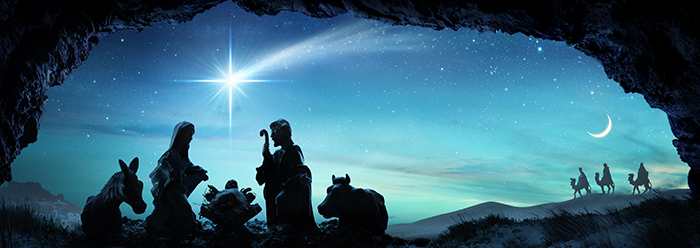Joy to the world, the Lord is come!
Let Earth receive her King!
Let every heart prepare Him room,
and Heav’n and nature sing.
“Joy to the World” is the most- published Christmas hymn in North America. But the funny thing is that despite how well it suits the Christmas season, it wasn’t originally meant as a Christmas Hymn. Written by minister, poet, and hymnist Isaac Watts, the song is actually meant to celebrate the second coming of Jesus, not the first. Yet, the song perfectly illustrates the joy that comes when a deeply felt longing is fulfilled
Repeat the Sounding Joy
Like many Hymnists of his day, Watts took inspiration from the Psalms when writing the words to Joy to the World – Psalm 98 in particular.
“Shout for joy to the Lord, all the earth, burst into jubilant song with music…” -Psalm 98:4
“Let the sea resound, and everything in it, the world, and all who live in it.
Let the rivers clap their hands, let the mountains sing together for joy…” -Psalm 98:7-8
The song, like these verses, depict the entirety of creation rejoicing that the King has returned. In the story of the birth of Christ, we see celebration in the heavens – a star over Bethlehem and a host of angels singing praises to God. We see the shepherds join in, and over the course of the story many people – from Mary, the mother of Jesus, to Simeon at the temple – rejoice over the newborn Messiah. The Jewish people had been waiting for generations for the promised Messiah to come and finally, there was relief.
This relief will be mirrored one day when, after generations of waiting, Jesus returns again for us.
Far as the Curse is Found
No more let sins and sorrows grow,
nor thorns infest the ground;
He comes to make His blessings flow,
Far as the curse is found.
Interestingly, the line “far as the curse is found,” has been omitted from some versions of the song. The line refers to the curse of Genesis 3 – and the entire reason for the first Advent. Through the curse, death came into the world. Death, and separation from our Creator, our Father. But Jesus’ arrival meant the beginning of the end of that curse.
“For as in Adam all die, so in Christ all will be made alive.” -1 Corinthians 15:22
What’s beautiful about reading this line now, after the first Advent, is that we know that Jesus’ death and sacrifice was not just for the Jewish people. The curse had spilled to all of humanity – not just the Jews. And now, so does the blessing of Jesus’ salvation.
And Wonders of His Love
In Philippians 2, Paul reminds us of the beauty of the first and second Advent. He begins by describing Jesus:
“Who, being in very nature God, did not consider equality with God something to be used to his own advantage; rather, he made himself nothing by taking the very nature of a servant, being made in human likeness.” -Philippians 2:6-7
In the first Advent, Jesus demonstrated His love for us by coming to us as a human, in all of its frailties and difficulties and sorrows. He, being God, humbled Himself for our sake – to break the curse… and to bring us home. In His death and resurrection, He defeated death – reuniting us with God. It is finished, and yet, there is more to come.
Paul continues in verse nine.
“Therefore God exalted him to the highest place and gave him the name that is above every name, that at the name of Jesus, every knee should bow, in heaven and on earth and under the earth, and every tongue acknowledges that Jesus Christ is Lord, to the glory of God the Father.” -Philippians 2:9-11
Doesn’t that sound like the passage in Psalms and the lyrics to Joy to the World? As believers, living after the second Advent, we can rejoice because we know the promises of Jesus. He is building a place for us and He will return for us and restore Joy to the entire world.
Emily Towns, Staff Writer, Paper Giants



0 Comments